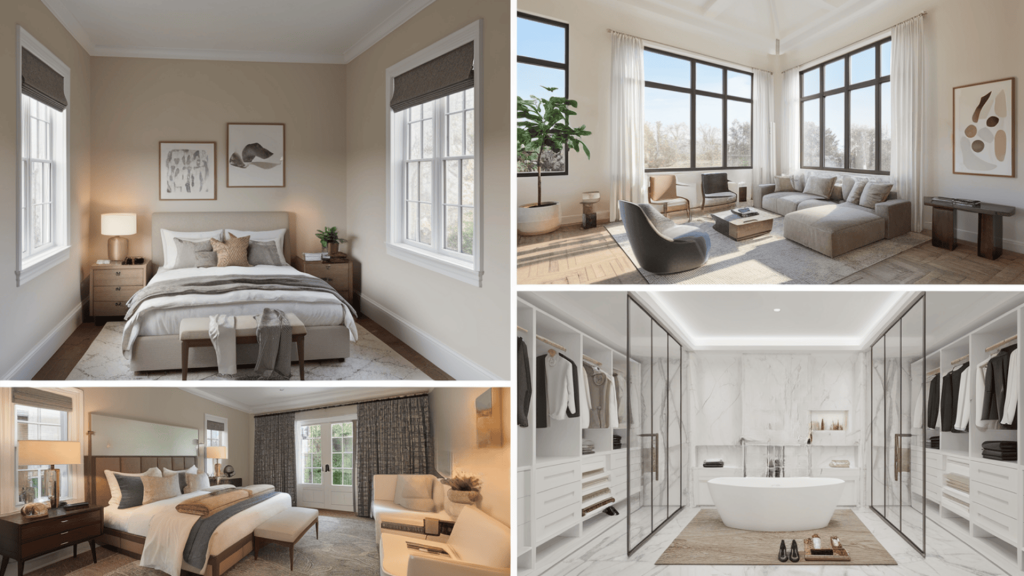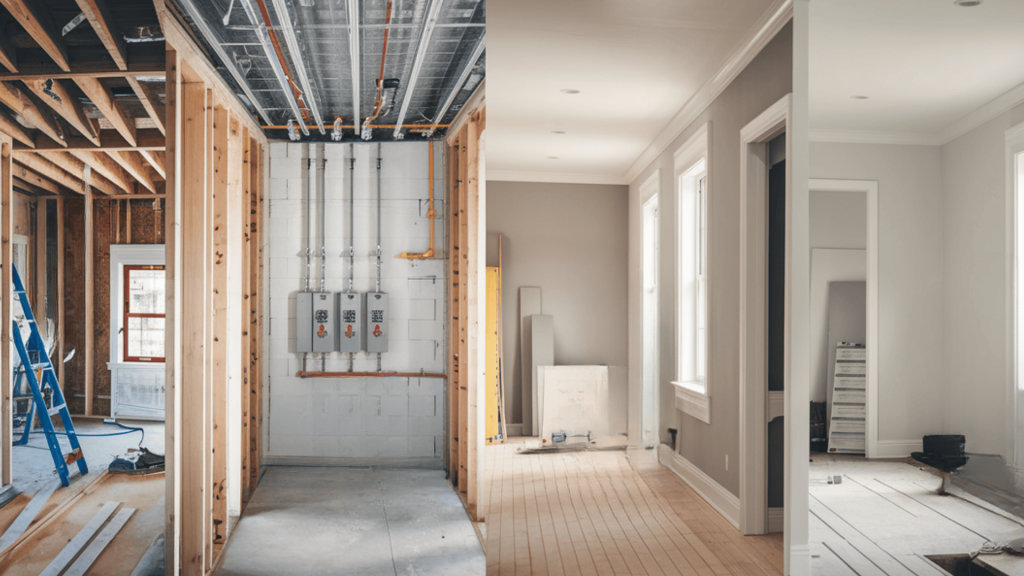When I first looked into adding space to my home, I had no idea what it might cost. Maybe you’re in the same spot, imagining an extra bedroom, a larger family room, or the kitchen you’ve always wanted.
The truth is, a room addition can be a great upgrade, but the cost can vary a lot. If you’re unsure how to budget or what to expect, this will help.
You’ll learn the average room addition cost, how size and room type affect the price, what real homeowners have spent, and smart ways to save without cutting corners.
By the end, you’ll know what to consider before calling a contractor. So, how much could your new space cost? Let’s find out.
Average Room Addition Costs at a Glance
The cost of a room addition typically ranges from $21,000 to $100,000, with most homeowners spending around $48,000-$50,000.
On a per-square-foot basis, costs run $80 to $300, with the majority falling between $125 and $250/sq. ft., while high-end or complex projects. Small additions of about 120 sq. ft. often range from $12,500 on the low end to $18,000-$30,000 mid-range, and $36,000–$45,000+ for high-end finishes.
Medium additions of 240 sq. ft. typically cost $25,000 low-end, $36,000-$55,000 mid-range, and $72,000-$85,000+ high-end. Large additions of 400 sq. ft. generally start at $50,000 low-end, $80,000-$90,000 mid-range, and can reach $100,000-$160,000+.
Key factors influencing price include room size and complexity, type of room (with kitchens and bathrooms costing more due to plumbing and electrical), materials and finishes, labor rates, permit and inspection fees, site preparation, and utility hookups.
In rare cases, luxury primary suites, home offices, or upscale bathroom additions can cost $130,000-$250,000+, but this is not the norm for most projects.
House Addition Cost

Typically, the cost falls between $35,000 and $160,000 for all types and sizes. Standard single-room additions typically range from $21,000 to $100,000, with many basic projects landing around $48,000–$50,000.
Cost per square foot is one of the best ways to compare:
- Typical range: $125–$250/sq. ft.
- Low end: $80–$100/sq. ft. (basic finishes, rural areas)
- High end: $300+/sq. ft. (urban areas, complex designs, premium finishes)
Here are average costs that range for common house addition types, from basic bedrooms to full primary suites:
| Addition Type | Typical Cost Range |
|---|---|
| Small bedroom | $20,000–$50,000 |
| Bathroom | $30,000–$90,000+ |
| Kitchen | $50,000–$125,000+ |
| Living/Family room | $30,000–$80,000 |
| Primary suite | $90,000–$175,000+ |
| Sunroom | $25,000–$70,000 |
| Basement conversion | $30–$50/sq. ft. (basic finish) |
Several key factors influence the cost of a house addition, and understanding them helps you plan your budget. Here are some of them:
- Size and scope: Larger, more complex builds cost more.
- Room type: Kitchens, baths, and accessory dwelling units (ADUs) are the most expensive.
- Materials and finishes: Custom or luxury choices increase totals quickly.
- Labor rates: Higher in cities like NYC, SF, and Seattle; lower in the Midwest and South.
- Permits, inspections, and site prep: Can add thousands to your project.
- Structural work: Foundation upgrades, roof tie-ins, and blending old with new add hidden expenses.
Start with the national averages to set a baseline. Then, compare your planned room size and type to more detailed cost breakdowns. This helps you build a realistic budget before requesting contractor quotes.
Real Homeowner Experiences & Community Insights
Hearing from homeowners who have completed additions can give you a realistic picture of what to expect. These real stories highlight how costs often shift from the first quote to the final bill.
12×12 Bedroom Addition
A Midwest homeowner planned a 144 sq. ft. bedroom with basic finishes. The initial quote was $22,000, but upgraded windows, better flooring, and extra outlets pushed the final cost to $28,500.
Even small upgrades can add thousands to your budget.
20×20 Family Room
In Texas, a 400 sq. ft. family room was quoted at $65,000. Unexpected foundation work and HVAC changes increased the total to $78,000.
Hidden structural issues are common; plan a contingency fund.
Kitchen Extension
A California homeowner budgeted $95,000 for a kitchen extension. Premium appliances, custom cabinets, and high-end finishes raised the final cost to $128,000.
Upgrades and custom work can increase your budget by 20–30%.
Factors That Influence Room Addition Cost
Several factors can affect how much you’ll pay for a room addition. Knowing these will help you set a realistic budget:
- Size and complexity: Larger builds or designs with complex layouts cost more to construct.
- Room type: Kitchens and bathrooms cost more than bedrooms or living rooms due to plumbing and electrical work.
- Materials and finishes: Premium flooring, fixtures, and custom-built elements raise the total.
- Labor rates and location: Urban areas often have higher labor and material costs than rural or suburban regions.
- Permits and code compliance: Meeting local building codes and passing inspections adds to the expense.
- Site preparation and demolition: Clearing the space, removing old structures, or grading land can add thousands.
- Custom features: Built-ins, specialty lighting, and unique architectural elements increase both time and cost.
The more specialized your addition, the higher the cost. Balancing your wish list with your budget is key to keeping expenses in check.
Room Addition Timeline

The time needed for a room addition depends on the size and complexity of the project. A small bedroom or home office can take 4-8 weeks, while a bathroom addition usually runs 8-12 weeks.
Kitchens often require 10-16 weeks, and larger spaces like a family room or multi-room addition may take 12-20 weeks. Complex projects, such as a primary suite, can extend to 16-24 weeks or more.
Delays can add significant costs. Longer build times may mean higher labor expenses, rising material prices, or extra permit renewal fees.
In some cases, you might also need temporary housing if parts of your home are unusable. Planning for a realistic schedule and allowing a buffer for setbacks can help you stay on budget and reduce stress during construction.
Planning Checklist
A smooth room addition starts with a clear plan. Use this checklist to keep your project on track from start to finish. Apply for the required permits early and schedule inspections at key stages.
Choose licensed, insured professionals and check references before signing agreements. Decide on finishes, fixtures, and other materials in advance to avoid delays.
Set a realistic timeline with clear checkpoints for each phase of construction.
Following a checklist helps you stay organized, avoid delays, and keep your project within budget.
Cost-Saving Strategies
Experienced contractors say a few smart decisions can help you cut costs without sacrificing quality. You should consider these strategies for cost-saving:
- Building up instead of out: Adding a second story can be cheaper than expanding the footprint, especially when lot space is limited.
- Off-season construction: Scheduling work in the contractor’s slow season can lead to better pricing and availability.
- Reusing or recycling materials: Salvaging doors, fixtures, or trim from your own home or resale shops can save money and add character.
- Getting multiple quotes: Comparing at least three detailed bids helps you find the best value and avoid overpriced proposals.
- Negotiating labor contracts: Clear agreements on payment terms, timelines, and included work can prevent cost overruns.
Careful planning and smart choices can make a big difference in keeping your addition on budget.
Conclusion
Adding more space to my home was exciting, but I quickly learned that knowing the room addition cost ahead of time made all the difference.
Now you’ve seen how size, type, materials, and location can influence the price, and how other homeowners have handled their budgets.
With that knowledge, you can plan smarter, avoid costly surprises, and make choices that work for your needs. I always recommend setting a realistic budget, keeping a contingency fund, and hiring experienced contractors.
Even small upgrades can add big value when done right. If you’re ready to move forward, check out my other posts for more home improvement tips and ideas to help you create a space you’ll love while staying within budget.
Frequently Asked Questions
How can I finance a room addition?
Common options include home equity loans, home equity lines of credit (HELOC), cash-out refinancing, and personal loans. Some homeowners also use renovation-specific financing programs.
Can I live in my home during a room addition project?
In many cases, yes. However, large or complex additions, especially kitchens or major structural changes, may require temporary relocation for safety and convenience.
What’s the difference between a room addition and a bump-out?
A bump-out expands an existing room without adding a full separate structure, making it smaller and less expensive than a full addition.





